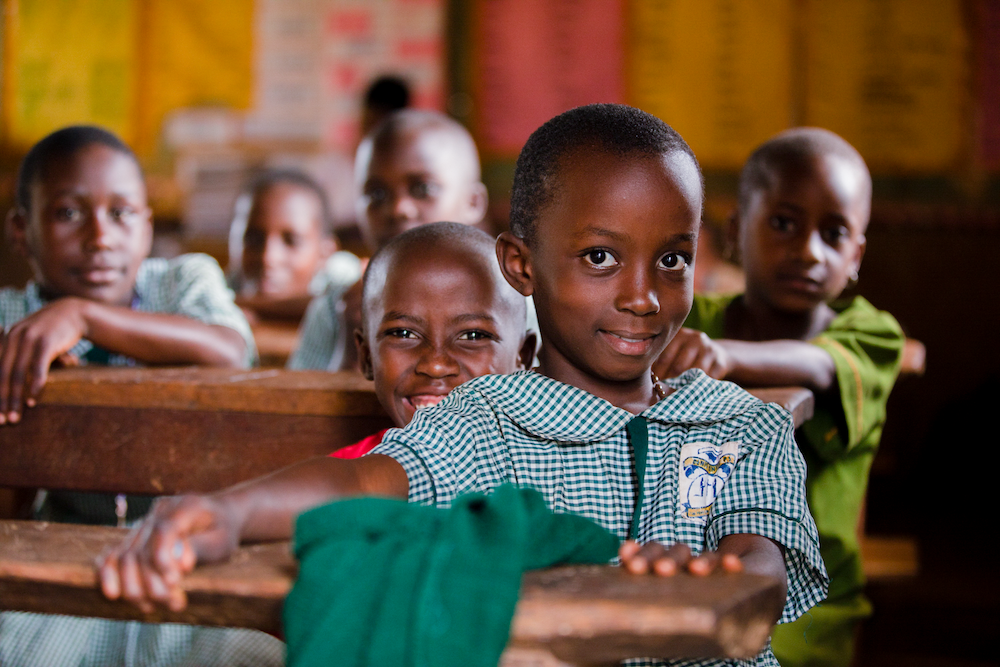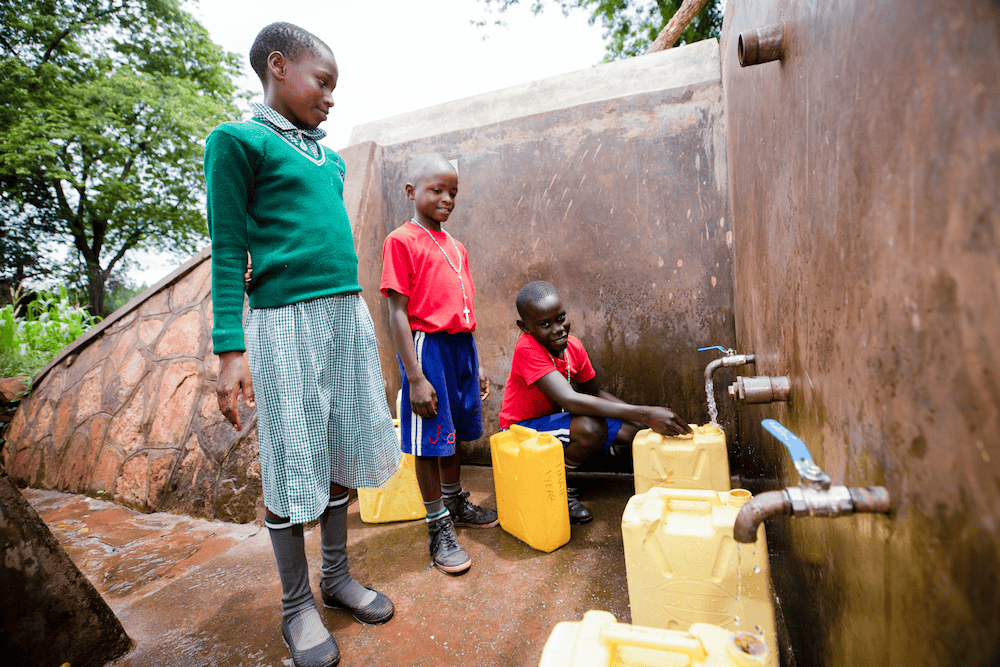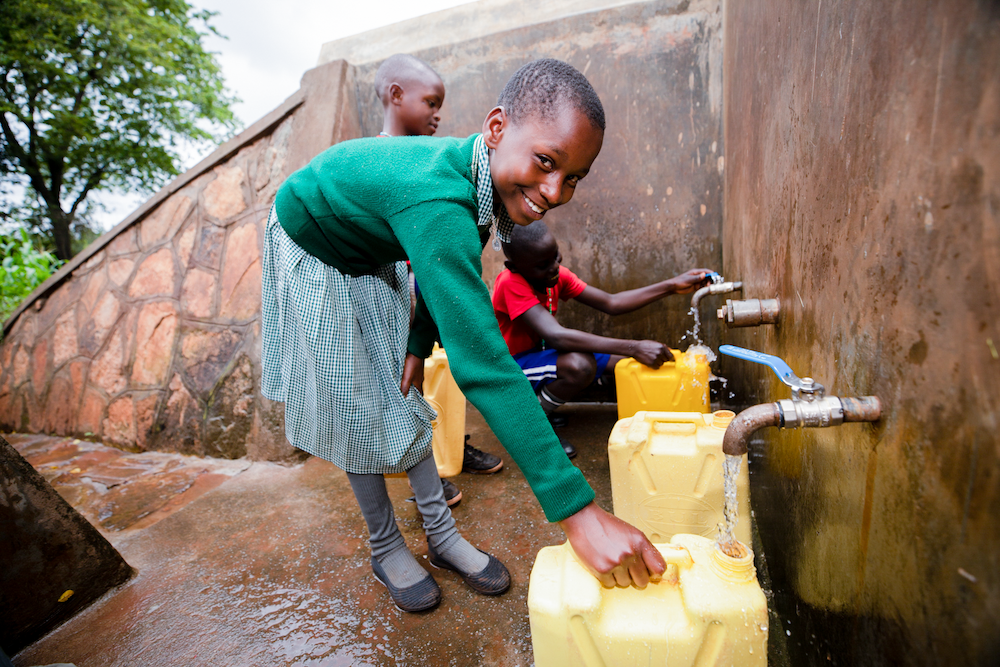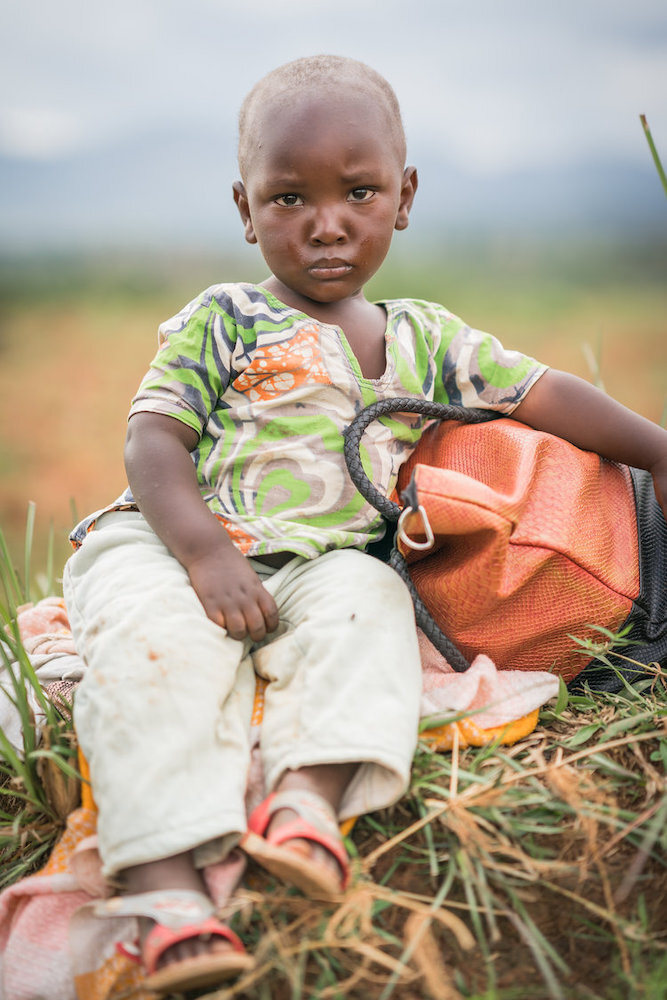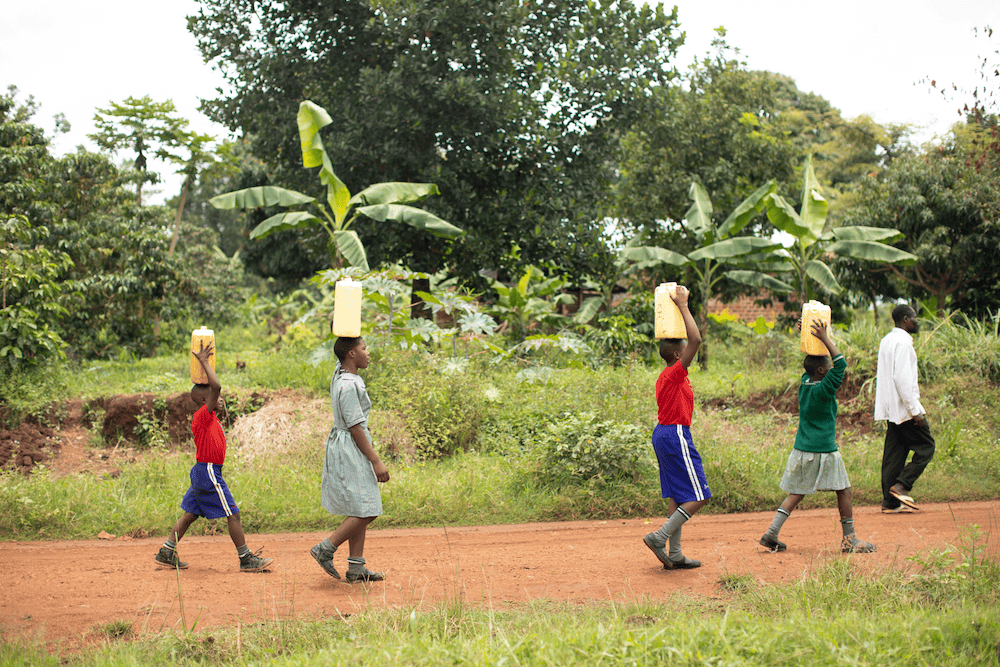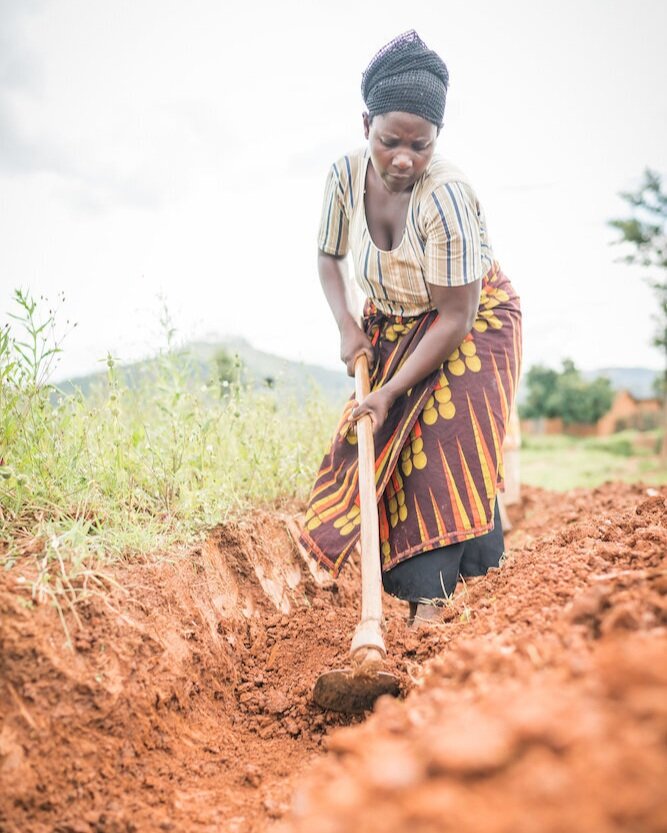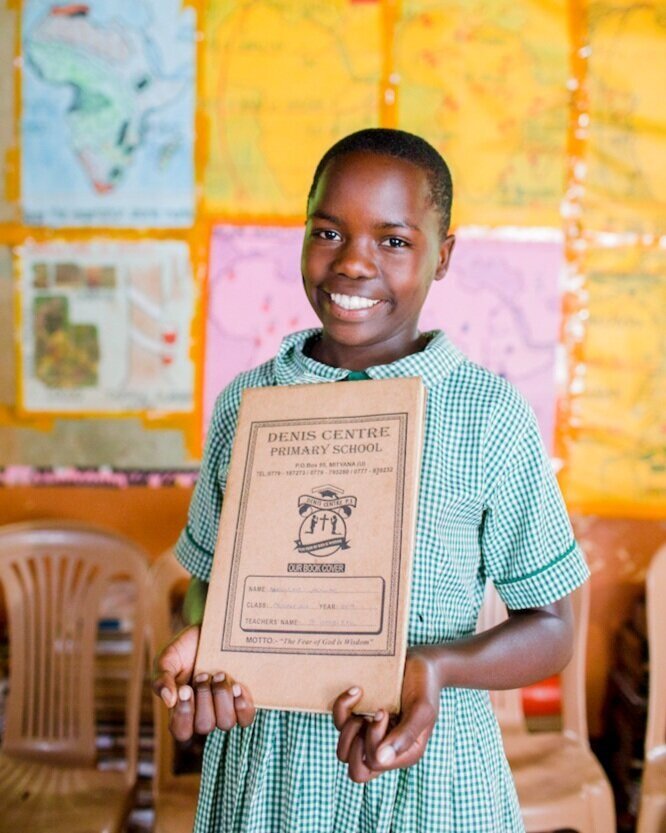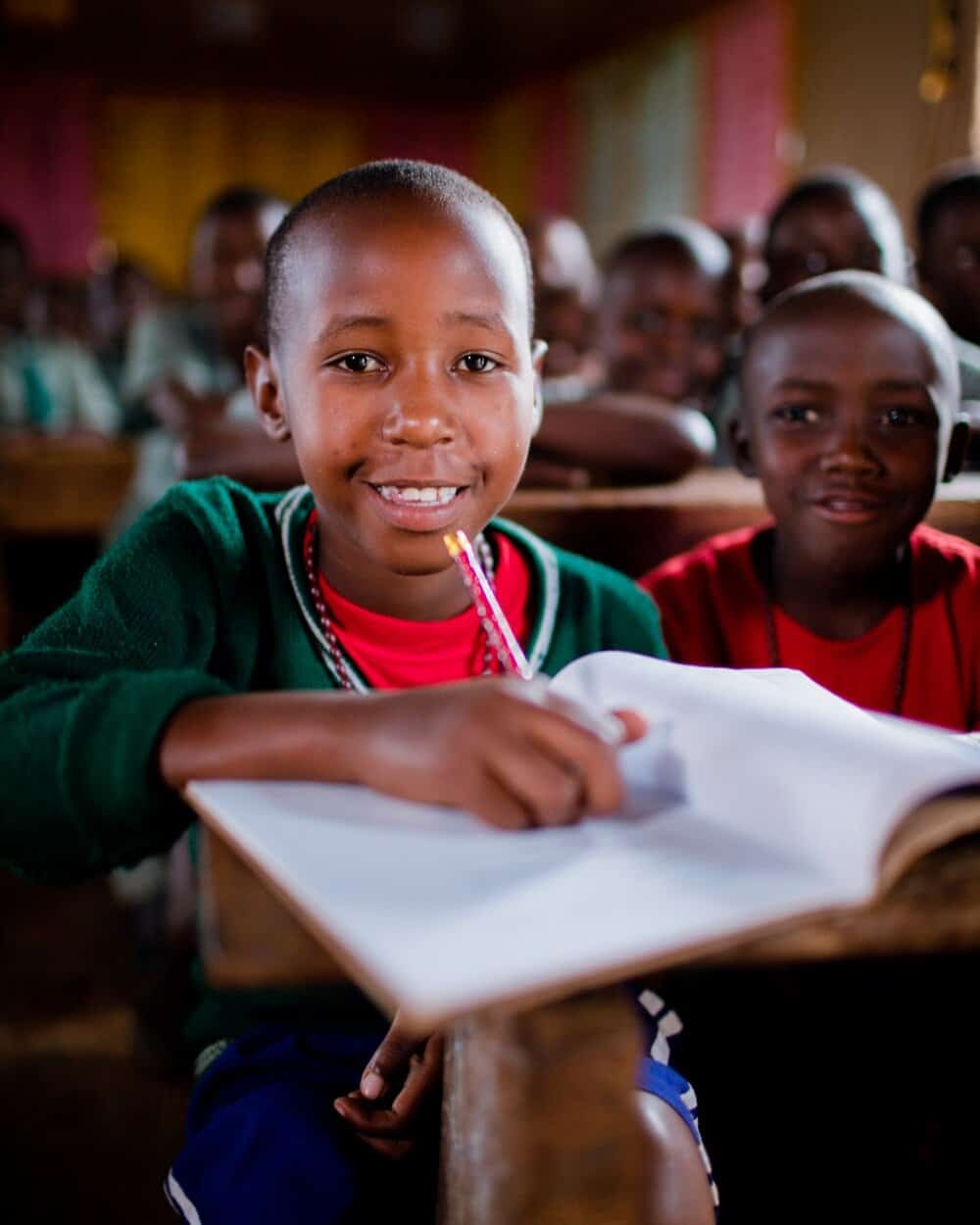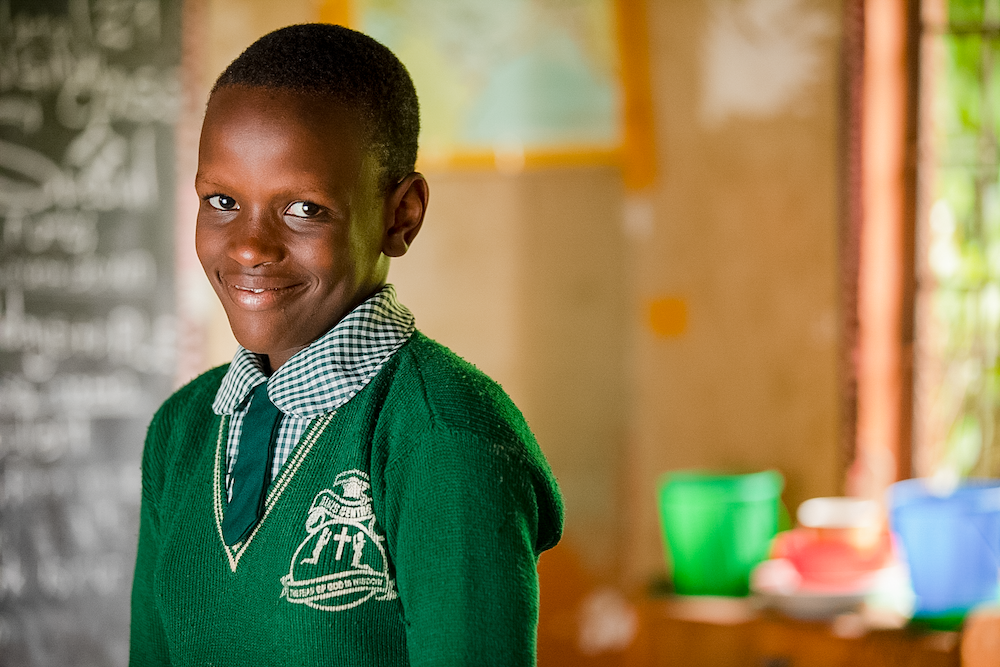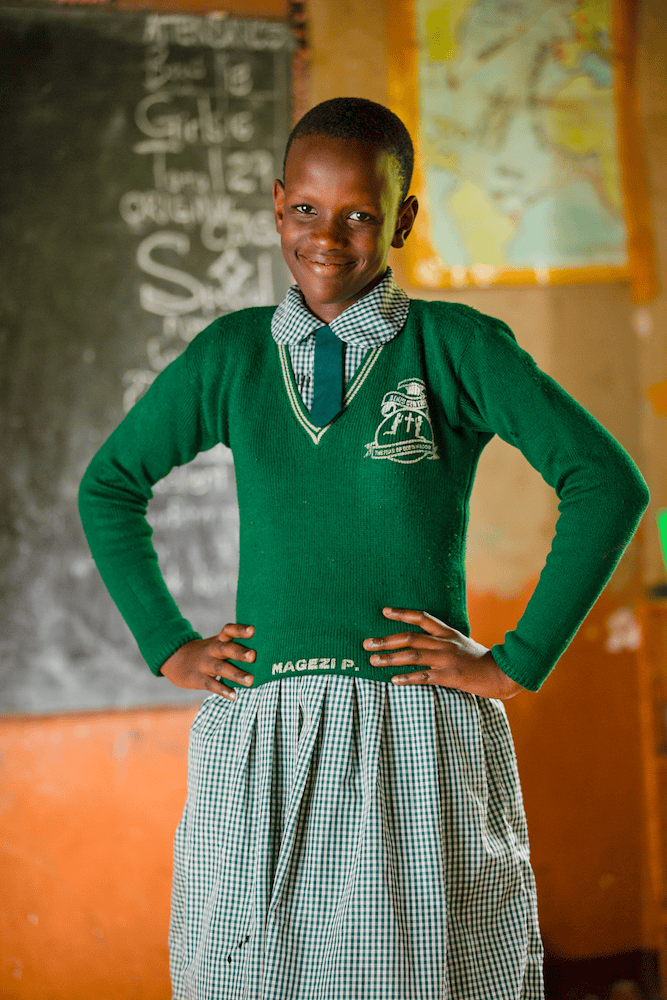How More Children Can Reach Their Destinies With You: Back to School 2021
Compared to this time last year, prospects are looking much better for kids around the world to be able to go back to school. Efforts like water well projects for schools enable more students to gain an education than ever before. No matter where you live or what your circumstances are, schooling opens up opportunities for the future. Education is actually one of the biggest factors in breaking the cycle of poverty. When children attend school, they gain skills to be able to go out into the world and create more pathways for success and betterment for themselves and their families.
How many of us learned about something in school and thought, “that’s what I want to be when I grow up!” But for many of the young people in communities our partners serve, the question is less, “what will I do after school?” and more, “how am I going to be able to go to school?”
Even as many schools have reopened in sub-Saharan Africa, many students still aren’t sure they will be attending. 9 million girls in sub-Saharan Africa between the ages of six to 10 years old will never attend school at all, compared to 6 million boys in that same age range. 23% of girls in the region miss out on even completing elementary school, as well as 19% of boys – the highest in the world. Over one in five children between the ages of six and 11 are out of school, rising to one in three by ages 12 to 14, and 60% by ages 15 to 17. These numbers are usually worse in rural areas and in economically underprivileged households.
This means that whatever dream a child has to be a teacher, doctor, pilot, entrepreneur, and so on can seem utterly impossible.
HOW WATER, SANITATION, AND HYGIENE (WASH) HELP
The Facts
Between 2017-2019, more than one out of five elementary schools globally didn’t have access to basic drinking water, and more than one out of three didn’t have basic handwashing facilities (UN), illustrating the need for new water projects in schools. Low-income countries that are the furthest behind in basic measures to return to school report less than 10% of schools have sufficient soap, clean water, sanitation and hygiene facilities, and masks, compared to 96% of high-income countries.
In 2020, roughly one out of four people worldwide did not have access to safely managed drinking water from home, and nearly half of the world lacked safely managed sanitation. As COVID-19 began to spread around the world, three in 10 didn’t have a way to wash their hands with soap and water at home. Eight out of 10 people without basic water services live in rural areas, and only 44% have safely managed sanitation services. Sub-Saharan Africa has the slowest rate of progress of any region: only 54% of people have access to safe drinking water.
Over the years, great strides have been made: since 2016, the percentage of the global population with safely managed drinking water at home did increase from 70% to 74%, as did safely managed sanitation services (from 47% to 54%). Hand-washing facilities with soap and water also increased from 67% to 71%. This provides a lot of hope that if we work together to make these services available to everyone, we truly can accomplish a lot.
However, if things continue the way they are, “billions of children and families will be left without critical, life-saving WASH services.” (UN-Water) By 2030:
-
1.6 billion still will not have safe drinking water at home,
-
2.8 billion still will not have access to safe sanitation services, and
-
1.9 billion still will not have access to basic hand-washing facilities.
To create universal access for everyone by 2030, the rate of progress would have to increase ten-fold for the least developed countries and 23-fold where people are twice as likely to lack safe drinking water. And vulnerable children and families will continue to suffer the most.
The Walk
One of the biggest issues keeping kids from school is a lack of access to clean water. Without a safe water supply near their homes, someone in the family will have to walk every morning – often for one, two, or more hours each way and then wait their turn in line – just to collect water for the family’s daily use. This is often the only water source within walking distance, and by the time someone – usually a woman or child – finally reaches home, the day is nearly over, with no time for school or much else.
Take Migisha, for example. Migisha and his mother live in Rwanda. Soon after his birth, Migisha’s mother began carrying him down the mountain next to their village each day to fetch water from an open spring – the only water source nearby. Then she would climb back up, carrying 40 lbs of water and her son. This was an exhausting, two-hour trip for water that made them both ill. Migisha’s mom is just one of the generations of women over the history of time that have had to make these kinds of walks every single day. Fortunately, the story doesn’t end there. (Read on to find out how our partners changed the lives of Migisha, his mother, and their entire village here.)
In a post we’ve shared with you before, you can see how one woman created a makeshift water source in a marsh. She is a great example of an intelligent and resourceful woman who created a new solution to an everyday problem. Just imagine the possibilities she, as well as millions of women and children around the world, would have if they could invest their time, energy, and resources into things other than finding water!
The Illness
Waterborne illness is the number one cause of death in children under the age of five. And having access to proper sanitation and hygiene is even more critical to reducing the burden of waterborne illness than access to clean water alone! Families need adequate sanitation and hygiene facilities to ward off illnesses and keep their water source clean.
When we partner with organizations in sub-Saharan Africa, they determine the water solutions that will be best for the community and implement them, training community members on how to maintain the water point as well. Then they improve the entire area’s health through WASH programming that brings real, lasting, local solutions to the water and health crises affecting millions of children and their families.
The Change-makers
Our partners on the ground serve new families and communities every day, equipping and empowering them to take charge of their health and future. Because they choose all solutions they will implement in their communities based on the geography, culture, and many other aspects of the area, 100% of Blood:Water projects work… and keep on working. Community members participate in the project, proudly owning the water source and its maintenance, and this fact alone extends the life of a water point from about 18 months to 10 or more years!
When one of our partners visited Migisha’s village to talk about building a clean water source in the village, they collectively decided to dig a two-mile long trench for a pipeline. Friends of Blood:Water provided funds and the villagers – including Migisha’s mother! – put in labor, and now clean water flows through this pipeline that is proudly owned and maintained by the village. Instead of experiencing frequent sickness and daily trips for water, Migisha will go to school for skills that will improve life for himself and his family … and it all starts with YOU.
WHAT YOU CAN DO ABOUT IT: BACK TO SCHOOL 2021
These problems can seem insurmountable, but we do have partners that are doing everything they can for everyone they can in the communities they serve. If someone like you provides access to a clean water source close to a girl’s home, everything will change. She can go to school and focus on her education, where her whole life will be filled with opportunities previously denied to her. The whole community’s crops and industry will be more productive. Health and living standards will improve. Life will be better for all.
This year, our Back to School campaign goal is $30,000 to help 750 children. $40 sends one child to school with clean water. For an amount we spend on the movies, or a few streaming subscriptions, you can provide the opportunity for a child in Africa to change the course of their life! Plus, any gift you make until September 3 will be matched, $1 for 1 up to $15,000, thanks to a generous donor. This means that for every young person you help this month, another will receive clean water too!
A Well Project for Pamellah’s School
Our partner in Mityana Uganda, PaCT, came to 12-year-old Pamellah Magezi’s school, Denis Centre Primary School, to construct a spring-protected well for the surrounding community in the months before COVID. This school well project would mean children who would have spent their time walking to get water every day could attend school thanks to safe water available near their homes and throughout the school day, without fear of waterborne illness.
PaCT also knew that community members needed to understand the importance of sanitation and hygiene to truly be free from these diseases. So they started a WASH club at the school so that club members could learn, apply, model, and teach others how to improve their lives through clean water combined with proper sanitation and hygiene practices. The children were educated and engaged in the benefits of proper handwashing and latrine use in school. That these simple practices will help keep them healthy excited them enough to take them home to educate their families as well.
Pamellah became a member of the WASH club and now teaches her fellow students about proper sanitation and hygiene, including the importance of hand-washing. Her favorite part is helping and encouraging her peers, and she wants to be a WASH advocate when she grows up so that she can continue to spread health and knowledge to people in need. She enjoys being able to say, “You have done a good job. You’ve used [safe] water, now you cannot suffer from typhoid. Many diseases you now [will not] suffer from.”
To see more stories of the students we’ve helped stay in school in Back to School years past:
-
2014: Arbe Guya Gonne (plus Angom, Edward, Blessing, and more)
-
2015: Tigist
-
2019: AnneMarie
-
2020: Chifenthe Preschool
Back to School 2021
When you give to Blood:Water’s Back to School campaign this year, you’re giving children like Pamellah access to clean water and life-saving practices and information. Not only that, but every dollar you give will be matched up to $15,000 so that even more children will be equipped to complete their education!
$40 means that one child will have water, sanitation and hygiene training, and healthy habits for life. But with the matching grant, your $40 now means two children will have these essential life skills and resources! $80 provides for four, $160 for eight, and so on until we can reach our goal – an impact that will compound beyond measure for generations to come.
Last year, supporters like you supported clean water projects for 11,456 people, and this year we can do even more to send thousands of children to school with clean water! With you, more young people than ever can complete their education, pursue their dreams, and fulfill their God-given potential.
More Stories:
Categories
